mobile View, to the German Version tap the flag


- Arab Republic of Egypt
- presidial republic
- own name: Gumhúrijat Misr al'Arabíja
• Flags
• historical Flags
• Meaning/Origin of the Flag
• Coat of Arms
• historical Coats of Arms
• Meaning/Origin of the Coat of Arms
• Aircraft Roundel
• Map
• Numbers and Facts
• History
• Origin of the Country's Name
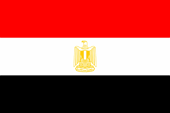
National, state and merchant flag,
ratio = 2:3,
Source, by: Wikipedia (D)





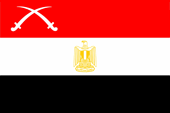
War flag and flag of the army,
Source, by: Flags of the World



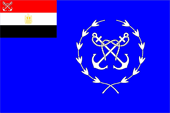
Naval flag,
ratio = 2:3,
Source, by: Flags of the World




Flag of the Air Force,
ratio = 2:3,
Source, by: Flags of the World



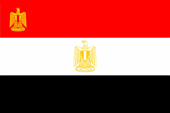
Flag of the President,
ratio = 2:3,
Source, by: Wikipedia (D),
www.tahyamisr.net



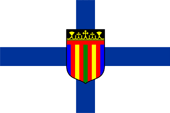
Flag of the Copt Christs,
ratio = 2:3,
Source, by:
Wikipedia (EN)




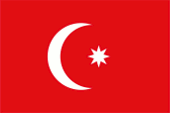
ca. 1793–1844,
Flag of the Ottoman Empire,
Source, by: Flags of the World



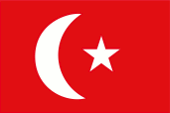
1844–1914,
Flag of the Ottoman Empire,
Source, by: Flags of the World




1844–1914,
Flag of the Sultanate of Egypt,
Source, by: Flags of the World



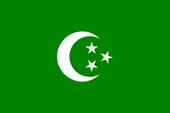
1922–1958,
Flag of the Kingdom of Egypt,
Source, by: Flags of the World



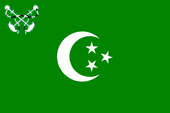
1922–1958,
Naval flag of the Kingdom of Egypt,
Source, by: Flags of the World



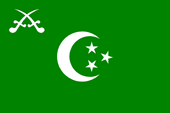
1922–1958,
Flag of the Egypt Army,
Source, by: Flags of the World




1922–1958,
Flag of the Egypt Air Force,
Source, by: Flags of the World



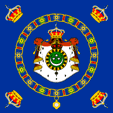
1922–1952,
Standard of the King of Egypt at sea,
Source, by: Flags of the World



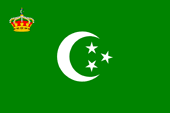
1922–1952,
Standard of the King of Egypt ashore,
Source, by: Flags of the World



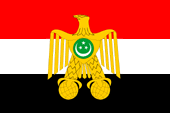
1952–1958,
Arab freedom flag,
Source, by: Flags of the World



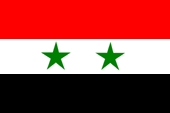
1958–1972,
Flag of Egypt as a part of the United Arab Republic,
(Abbreviation: VAR [UAR], the political union of Egypt and Syria 1958–1961),
Source, by: Flags of the World





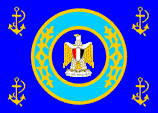
1958–1972,
Flag of the President at sea,
ratio = 5:7,
Source, by: Flags of the World



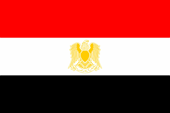
1972–1984,
National- und Merchant flag,
ratio = 2:3,
Source, by: Flaggen und Wappen



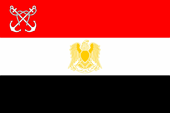
1972–1984,
Naval flag,
ratio = 2:3,
Source, by: Flaggen und Wappen




The today's flag of Egypt shows three horizontal, same wide stripes in red, white and black with the golden (yellow) Eagle of Saladin, and was hoisted up in her today's form on 4th of October in 1984. The styling of the flag goes back to the after the abolition of the monarchy in the year 1952 introduced Arabic liberation flag. The eagle in the today's flag is, how in the Arabic liberation flag, too, the of the sultan Saladin and his descendants, the Aijubide-Kalifs, and is an idol-figure of the Arabian unity, too. He sustains today a breast shield, which is colored in the colors of the flag, and holds a font-ribbon with the name of the state in it's claws. Specially for Egypt the colors have the following meaning, too: red remembers the fights in the revolution abd the thereby given blood, white stands for a shining future and black for the dark past.
The colour triad of red, white and black is referred as Panarabian colours. This is not entirely correct. The three colours go back to the late Gamal Abd el-Nasser (1918–1970), Egyptian military officer, politician as well as later the state's president and prime minister, and most important representative of the Arabian nationalism and panarabism. After the national revolution of 1952 the Arabian Liberation Flag was introduced in Egypt, which represented those ideals. It was, at least in choice and arrangement a model for many other Arabian states and state alliances. The colours stand always for the revolution (red), the future (white) and the past (black). The colours have their roots in the flag of the Arabian Revolt during the First World War. Yet the colours of the Arabian Revolt (Arabian Movement) include even green.
The colour quartet of four, green, white, black and red is a special Arabian colours symbol, the Panarabian colours. The (Pan)Arabian colours were officially introduced by the Sheriff Hussein of Mekka – of the lineage of the Hashemides – as colours of the Arabian Movement during the First World War at the secession of the Kingdom of Hedjas from the Ottoman Empire. The flag of Hedjas served as pattern. The colours have the following meaning: Red is the colour of Omar, the second calif; white stands for the Omajiades, a calif-dynasty, which goes back to the fifth calif Moawija I.; green stands for the Fatimides, a ismailitic-shiit calif-dynasty, which goes back to the fourth calif Ali; and black stands for the Abbasides, a calif-dynasty, which goes back to the calif Abbas I. Red is also the colour of the Hashemides, an Arabian sovereign-dynasty, which probably goes back to Hashim ibn Abd al-Manaf, the grandfather of Mohammed. Green is in addition generally the colour of Islam, and does not refer only to the Arabian countries.
The flag history of Egypt: The flag of the Turkish vice kingdom of Egypt (1867-1882) is clearly from Turkish origin, how it is to see in the coloration and the symbols. The flag of the Kingdom of Egypt goes back to the islamic green, but the islamic symbolism remembers even slightly the Turkish times. The green should remind the fruitful Nile delta, too. This flag was in use till 1958, so as well after the end of the kingdom (1952). The flag of the UAR (1958-1961) shows three stripes in red, white and black, which were already officially introduced in Egypt in 1952, with the introduction of the Arabic liberation flag, completed by two stars, from them the one stands for Egypt and the other for Syria. Even after the end of the UAR (1961) Egypt maintaines this flag till 1972. In context with the formation of the "Federation of Arabic republics" between Libya, Egypt and Syria in the year 1972, was arranged, that these three states have to use red-black-white flags, which show in the center a golden hawk. The only difference should be the name of the respective state in the font ribbon, which holds the hawk in his claws. Egypt introduced such a flag in 1972, and maintained her until 1984 (Libya until 1977, Syria until 1980).
Source: Flags of the World,
Wikipedia (D),
Die Welt der Flaggen,
Flaggen und Wappen,
Flaggen Wappen Hymnen


since 1984,
Coat of arms of Egypt,
Source, by: Wikipedia (D),
Corel Draw 4

Coat of arms of Egypt on the flag,
Source, by: Wikipedia (D),
Corel Draw 4

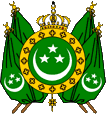
1922–1958,
Coat of arms of the Kingdom Egypt,
Source, by: Der neue Brockhaus

1958–1972,
Coat of arms of Egypt,
Source, by:
Wikipedia (D),
Corel Draw 4
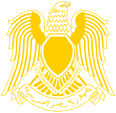
1972–1984,
Coat of arms of Egypt,
Source, by:
Wikipedia (D),
Corel Draw 4

The today's coat of arms of egypt is the symbol of the sultan Saladin and his descendants, the Aijubide's Kalifs, and is an idol-figure of the Arabian unity, too. He sustains today a breast shield, which is colored in the colors of the flag, and holds a font-ribbon with the name of the state in it's claws.
Source:
Die Welt der Flaggen,
Flaggen Wappen Hymnen,


1945–1958,
Aircraft Roundel,
Source, by: Wikipedia (EN)

1958–1972,
Aircraft Roundel,
Source, by: Wikipedia (EN)

since 1972,
Aircraft Roundel,
Source, by: Wikipedia (EN)

Position:
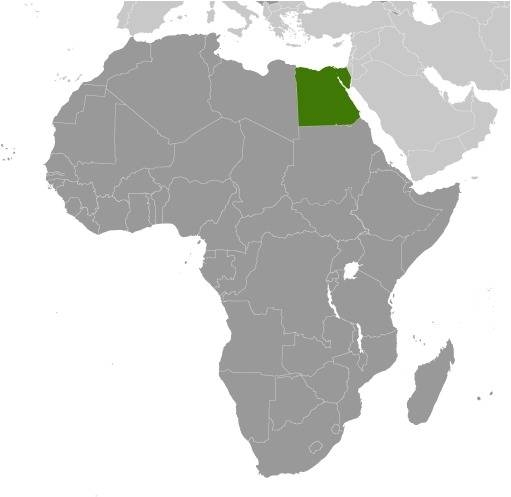
Source: CIA World Factbook
Map of the country:
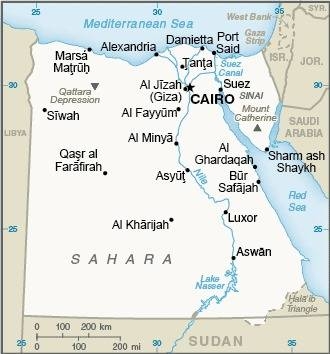
Source: CIA World Factbook

Area: 386.659 square miles
Inhabitants: 98.423.600 (2018)
Religions: 90% Muslim, 10% Christian (mostly Copts)
Density of Population: 255 inh./sq.mi.
Capital: Cairo (Al-Quahirah), 9.153.000 inh. (2017)
official Language: Arabian
Currency: 1 Egyptian Pound = 100 Piasters = 1 000 Milliemes
Time Zone: GMT + 2 h
Source: Wikipedia (D)

3000 to 800 B.C. · ancient Egypt
525 B.C. · Persian conquest
332 B.C. · Greek conquest
30 B.C. · Roman conquest
640 · Arabic conquest
1517 · Turkish conquest
1805 · Turkish vice kingdom
1882 · British conquest
1914 · end of the vice kingdom
1922 · independence as kingdom
1952 · end of monarchy
Source: Wikipedia (D),
World Statesmen

The name "Egypt" comes from the ancient second name of the city of Memphis. This was "Hutkaptah","Shrine of the god Ptah". Sometimes is also the Greek word "aigyptos", "dark" tryed to be compliant, but it is a coincidence. The ancient Egyptians called their land "Kemet," "The Black Land". The today's Arab-Egyptians call it "Misr".
Source: Handbuch der geographischen Namen


![]()









































































